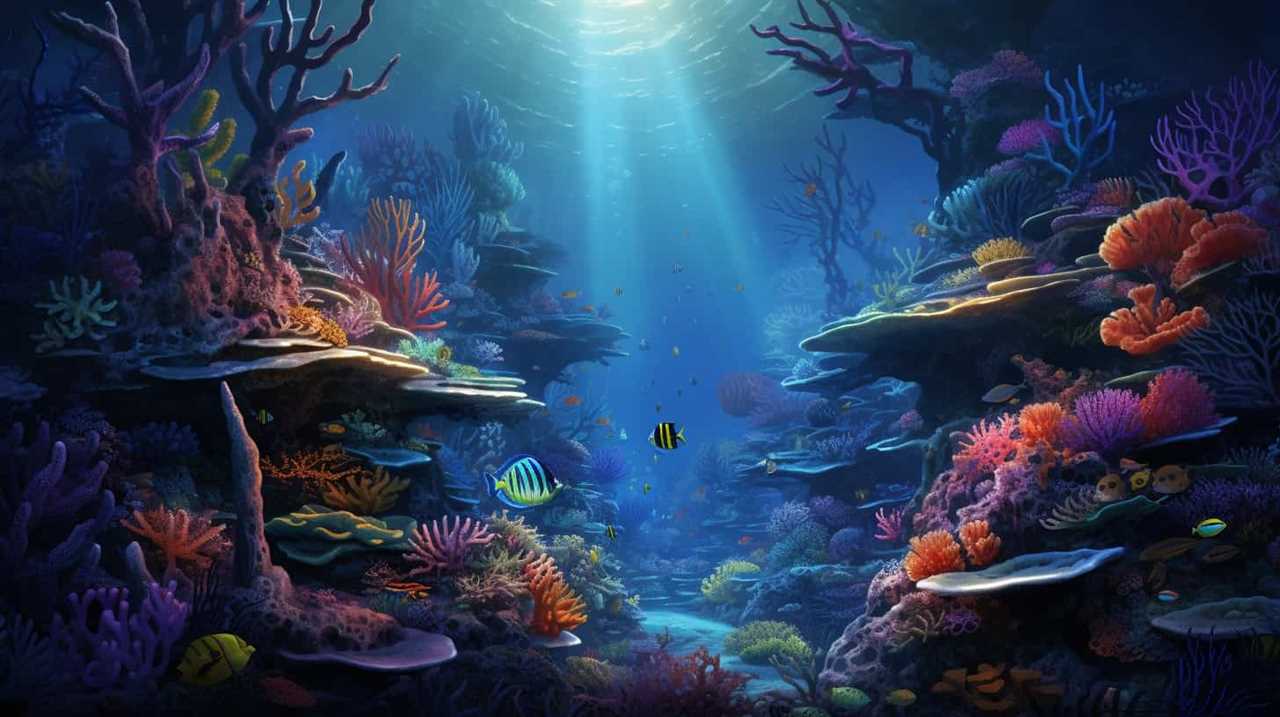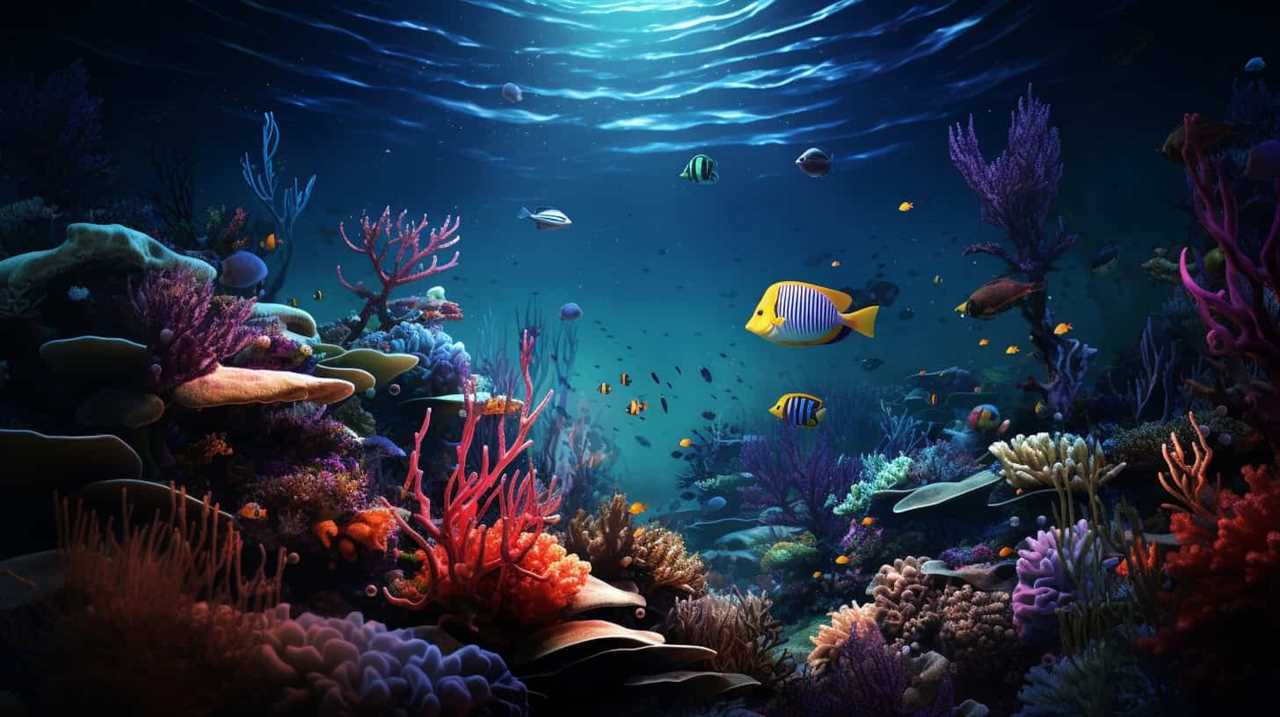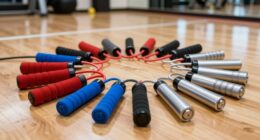Welcome to our guide on improving and capturing ocean echoes.
We’ve got the insider knowledge you need to capture those mesmerizing ocean sounds like never before.
In this article, we’ll show you how to:
- Choose the right microphone
- Position it for optimal sound capture
- Select the ideal recording device
- Employ techniques that will amplify and enhance those enchanting sea echoes.
Get ready to dive into the world of innovative sound recording and take your sea echo recordings to the next level.

Key Takeaways
- Hydrophones are popular options for recording sea echoes due to their high sensitivity, low self-noise, and wide frequency response range.
- Strategic placement of microphones at different depths and angles is crucial for capturing a wide range of frequencies and creating an immersive sound experience.
- Minimizing background noise through microphone adjustments, directional microphones, and post-processing techniques can improve the clarity of sea echo recordings.
- Post-processing techniques such as spectral analysis, time-frequency analysis, and echo cancellation algorithms can be used to analyze and extract valuable information from sea echoes.
Choosing the Right Microphone
Our first step in amplifying and recording sea echoes is to choose the right microphone for the task. When it comes to capturing underwater sounds, it’s crucial to consider the specific requirements and challenges of the marine environment. There are various microphone types that are suitable for this purpose.
One popular option is the hydrophone, which is specifically designed for underwater recording. Hydrophones are built to withstand the pressures of the ocean and are highly sensitive to the unique frequencies of sea echoes.
Additionally, it’s important to pay attention to the microphone features. A good underwater microphone should have a high signal-to-noise ratio, low self-noise, and a wide frequency response range. These features ensure that the microphone can accurately capture and reproduce the intricate details of sea echoes, providing researchers and innovators with the data they need to further explore and understand the underwater world.
Positioning the Microphone for Optimal Sound Capture
To achieve optimal sound capture, we position the microphone strategically in the marine environment. The placement of the microphone is crucial in capturing the essence of the sea through sound.

There are various microphone placement techniques that can be employed to achieve the best results. One technique is to place the microphone in close proximity to the water’s surface, as this allows for the capture of the unique sound reflections and reverberations created by the sea.
Another technique is to position the microphone at different depths, allowing for the capture of the various layers of sound in the marine environment.
Additionally, the use of multiple microphones placed at different angles can provide a more immersive and three-dimensional sound experience.
Selecting the Ideal Recording Device
Now that we’ve positioned the microphone for optimal sound capture, how do we select the ideal recording device to amplify and record sea echoes? Understanding audio frequencies and calibrating recording equipment are key factors in making this decision.

When it comes to choosing a recording device, it’s important to consider its frequency response range. Look for a device that can accurately capture the entire range of frequencies produced by the sea echoes. Additionally, ensure that the recording device has a low self-noise level to avoid any interference with the delicate sounds of the ocean. The device should also have sufficient storage capacity and a reliable power source for extended recording sessions.
With the right recording device in hand, we can now move on to exploring techniques for amplifying ocean sounds.
Techniques for Amplifying Ocean Sounds
After selecting the ideal recording device, we can now explore techniques for amplifying ocean sounds. Underwater acoustics plays a crucial role in capturing distant sounds in the vast ocean. To achieve this, we can utilize advanced techniques that enhance the clarity and precision of the recorded audio. One such technique is the use of hydrophones, which are underwater microphones designed specifically for capturing underwater sounds. These hydrophones can be strategically placed at different depths to capture a wide range of frequencies. Additionally, signal amplification systems can be used to boost the weak signals received by the hydrophones. These systems employ advanced algorithms and filters to isolate and enhance the desired ocean sounds while minimizing background noise. By combining these techniques, we can capture and amplify the mesmerizing symphony of the ocean depths.
| Technique | Description |
|---|---|
| Hydrophones | Underwater microphones designed for capturing underwater sounds |
| Strategic Placement | Placing hydrophones at different depths to capture a wide range of frequencies |
| Signal Amplification | Systems that boost the weak signals received by hydrophones |
| Advanced Algorithms | Algorithms used in signal amplification systems to isolate and enhance desired ocean sounds |
| Noise Reduction Filters | Filters used in signal amplification systems to minimize background noise and enhance clarity |
Tips for Improving Sea Echo Recordings
We can further enhance the quality of our sea echo recordings by implementing a few key tips.

Underwater acoustics play a crucial role in capturing clear and accurate sound signals. To improve recordings, it’s essential to choose the right equipment, such as hydrophones, with high sensitivity and low self-noise.
Proper placement of hydrophones in strategic locations will help capture the desired echoes effectively. Additionally, employing advanced sound editing techniques can significantly enhance the recordings. Utilizing equalization, noise reduction, and reverb adjustments can help eliminate unwanted background noise and improve the overall clarity of the echo.
It’s also important to experiment with different recording angles and distances to find the optimal position for capturing the desired echo.
Frequently Asked Questions
How Can I Protect My Microphone From Water Damage While Recording Sea Echoes?
To protect our microphone from water damage while recording sea echoes, we can take certain protective measures. One option is to use waterproof microphone covers, which provide a barrier against any potential water infiltration.

Are There Any Specific Time or Weather Conditions That Are Better for Capturing Clear Sea Echoes?
There are specific time and weather conditions that are better for capturing clear sea echoes. Factors such as tides and the best locations play a crucial role in ensuring optimal results during the recording process.
What Are the Best Settings to Use on My Recording Device to Capture the True Essence of Sea Echoes?
To capture the true essence of sea echoes, we recommend using the best recording techniques for capturing natural reverb in outdoor environments. Proper microphone placement is also crucial for capturing the unique characteristics of sea echoes.
Can I Use a Regular Microphone or Do I Need a Specialized One for Recording Sea Echoes?
For recording sea echoes, a specialized microphone is recommended over a regular one. Its design and features are tailored to capture the intricate nuances of underwater sounds, enhancing the final recording quality.
How Can I Reduce Background Noise and Focus Solely on the Sea Echo While Recording?
To reduce background noise and focus solely on the sea echo while recording, we employ techniques for enhancing depth and clarity. Additionally, we explore the use of underwater microphones for capturing unique sea echo sounds.

Conclusion
In the vast ocean of sound, capturing and amplifying the echoes of the sea can transport us to a world of tranquility and wonder.
By carefully selecting the right microphone, positioning it optimally, and choosing the ideal recording device, we can unlock the hidden melodies of the waves.
With techniques tailored to amplify ocean sounds and tips to enhance our sea echo recordings, we can immerse ourselves in the symphony of the sea, where every note becomes a gentle reminder of the beauty that lies beneath the surface.










